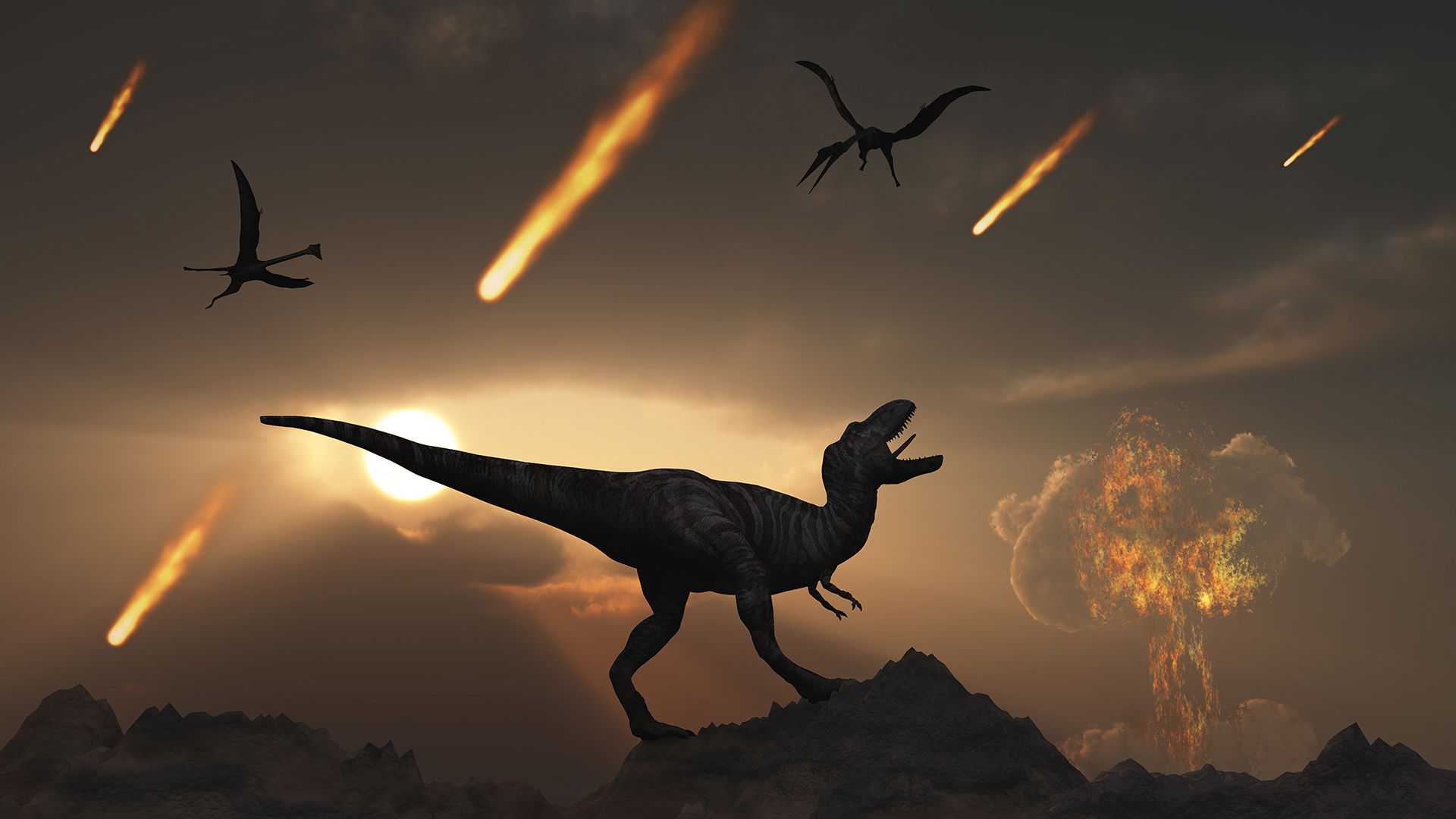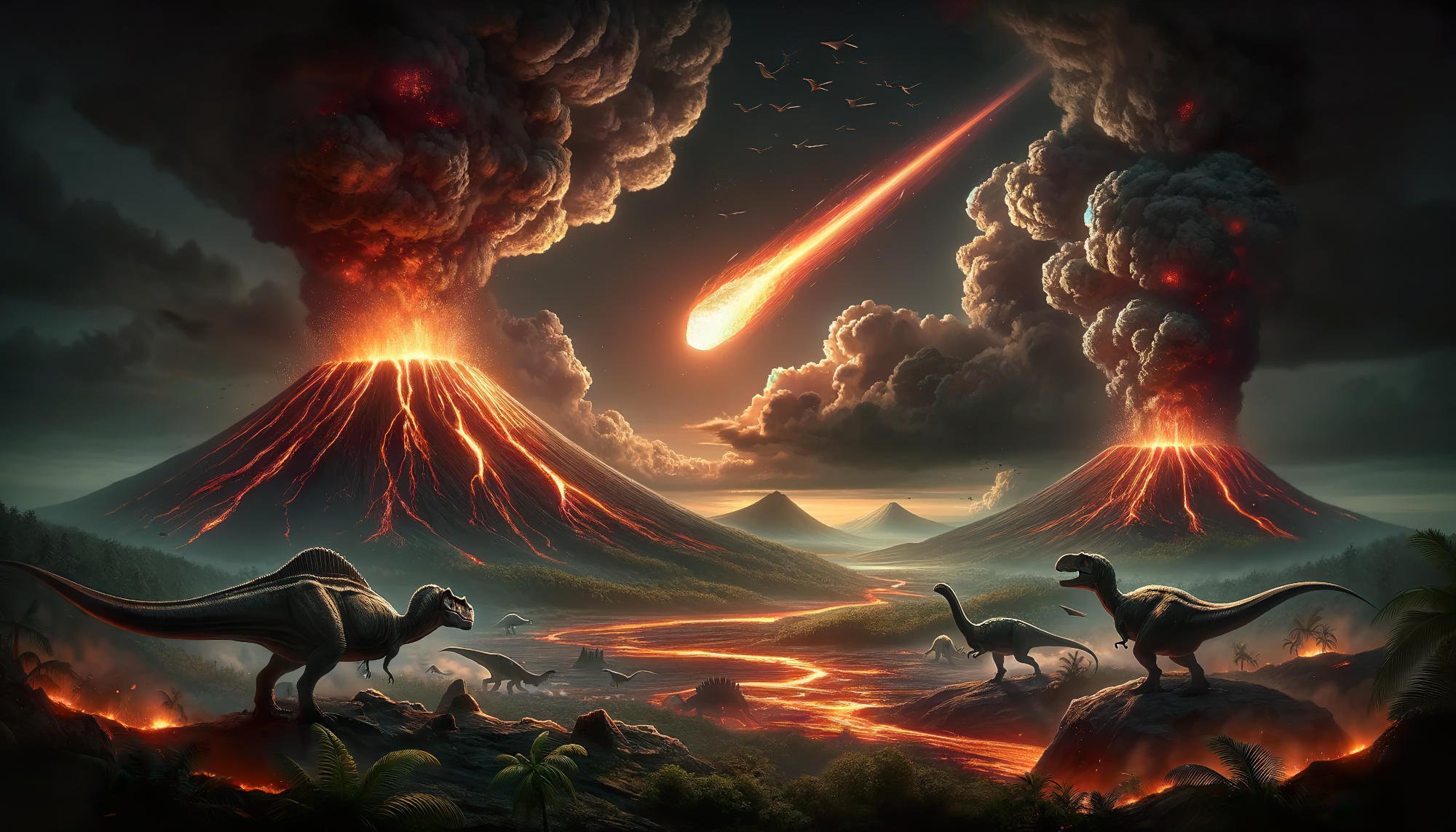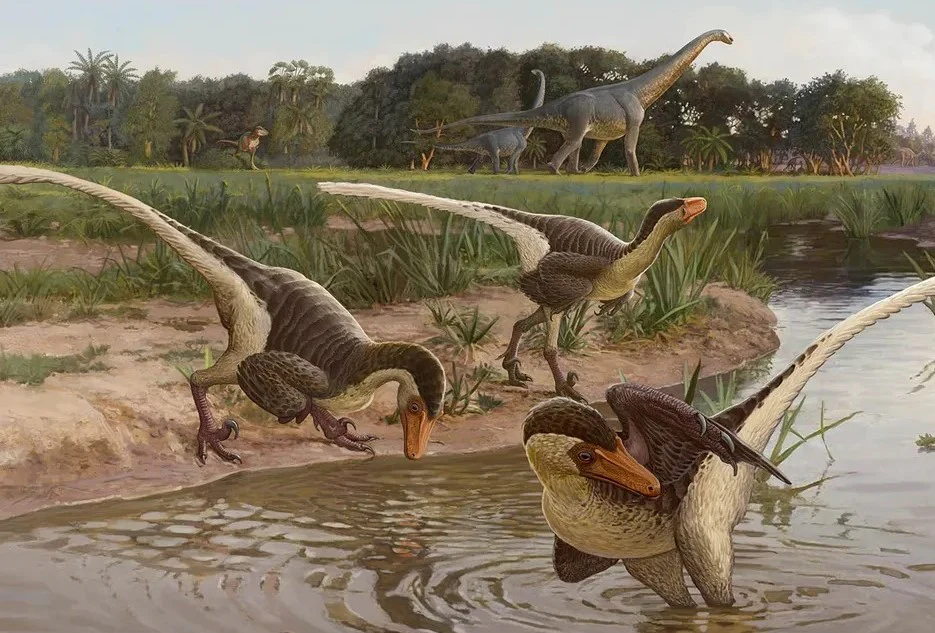Yes, because they evolved in different environments, dinosaurs and evolution are associated. That led to the existence of different species coming from a single species. The natural selection shown through their evolution suggests that survival skills such as size, protection features, or mobility enhanced survival abilities. Modern birds are direct line descendants of small theropod dinosaurs, so obviously through the mechanisms of evolution, certain forms of dinosaurs have evolved into the birds we have today. That the dinosaur body has evolved into a bird demonstrates that adaptation and species change are a process.
Dinosaur Origins-Extrapolated From Evolution

Dinosaurs were first seen on the earth’s surface during the Triassic period, approximately 230 million years ago. These animals were derived from ancient reptiles known as archosaurs, similar to those that crocodiles and pterosaurs evolved from. Evolutionary biologists have determined that dinosaurs are derivatives of these earlier reptiles but did have a number of distinct changes in their skeletons that helped enable them to walk upright. This transformation provided dinosaurs with several prime advantages for movement, making them the leaders of terrestrial animals.
How Dinosaurs Domineered the Mesozoic Era

The Mesozoic Era, also called the “Age of Dinosaurs,” covers a period of time that ranges from about 252 million to 66 million years ago. It can further be divided into the Triassic, Jurassic, and Cretaceous periods. Dinosaurs came during this time and diversified into many species, ruling Earth as the dominant living thing. Their ability to adapt to changing environments, which included land, water, and the skies for flyers, allowed them to dominate such vast expanses across the surface. They achieved evolutionary supremacy spanning more than 160 million years to be leaving behind testimonies to their biological superiority in different habitats.
Major Evolutionary Adaptations in Dinosaurs
Some of the major adaptations for dinosaurs include bipedal locomotion in which they free their forelimbs for other uses such as hunting or foraging, teeth and jaws that were specifically suited for herbivorous, carnivorous, or omnivorous diets. The advancement in body mass, from small agile dinosaurs to long-necked, gigantic sauropods, allowed occupation of wide ecological ranges. Other dinosaurs developed feathers, a characteristic probably developed for thermoregulation before the benefits to flight.
Dinosaurs and Reptiles Link
Dinosaurs belong to a family group of reptiles: diapsid lineage, where there are two holes in the skull behind the eyes. They belong to the same ancestral group as modern reptiles like lizards, snakes, and crocodiles; although these turned into a separate group called “Avemetatarsalia” in the dinosaurs. That divergence shows that dinosaurs should have developed some particular features, like standing upright or hollow bones, which distinguished them from other reptiles during that time.
Theories on Evolution of Dinosaur Species
The reason that the dino evolved into such diverse elements was because of speciation, driven by various environmental factors and climate change and also by competition for resources. Many theories go through the process of how these species evolved over time. One is the adaptive radiation theory, which assumes that after mass extinction at the end of the Permian period, early dinosaurs quickly diversified to fill up empty ecological niches. Other theories consider how geographic isolation, caused by continental drift, led unique evolutionary pathways on different landmasses for separate species.
Transition from Dinosaurs to Birds

Perhaps one of the greatest stories of evolutionary history involves the origin of modern bird species from some small theropod dinosaurs. Fossils demonstrate that feathers, originally used for warmth and display purposes, in theropods like Archaeopteryx grew large enough to be fashioned into wings. After millions of years, the feathered dinosaurs evolved further and came to have lighter skeletons, more efficient respiratory systems, and better coordination in their flight. Of course, this evolution from land to air represents one of the greatest transitions that have occurred in life’s history on Earth.
What led to the extinction and the evolutionary gap?

It is about this time, approximately 66 million years ago that most of the dinosaurs were wiped out in the K-Pg extinction event, apparently caused by a large asteroid impact concurrent with volcanic eruptions. This extinction created an enormous evolutionary space that paved the way for the mammals during the time of the dinosaurs, which were small and nocturnal, to evolve and diversify into new larger forms. The extinction event turned out to be a kind of reset mechanism to reconfigure Earth’s evolution dynamics, paving the way for the new life forms that would eventually take over the face of the planet.
10 Fascinating Dinosaurs That Ruled Australia and Antarctica: A Journey Through Prehistoric Giants
Modern birds as direct descendants of dinosaurs
Modern birds are direct continuation of the dinosaurian legacy and represent direct descendants of a branch of theropod dinosaurs. The celebrated discovery of feathered dinosaurs and transitionals like Archaeopteryx furnished the vital evidence that birds did not just evolve from dinosaurs—they are dinosaurs. Their hollowed bones, nearly identical lung structures, and even behaviors like nesting have been inherited from their dinosaur ancestors, making them most tangible living links to the ancient prehistory.
Fossil Evidence Indicative of Dinosaur Evolution
Loads of fossil evidence that is illustrative of evolution for dinosaurs have been unearthed by paleontologists. Transitional species are revealed through fossils, such as gradual feather development, quadruped-to-biped locomotion transformation, and diets and habitats among the species. These fossils usually lie stratigraphically in rock layers and thus create a chronological record of the evolutionary progression of species over millions of years.
How Evolutionary Studies Teach Dinosaur Paleontology

However, grasping the evolutionary history of dinosaurs has immense implications for current paleontology. Evolutionary biology aids in reconstructing extinct species’ behavior, physiology, and environments in the practice of paleontologists. The fossils avail a suitable material whereby one can trace the evolutionary trees and note how different species of dinosaurs were adapted and evolved from the beginning. Evolutionary insights also help predict what kind of species may have existed in the poorly explored regions or time periods, guiding future fossil discoveries.
These detailed descriptions account for why dinosaurs evolved and their influence on modern biology, supporting how very interrelated the fossil record is with the general process of evolution.
What caused dinosaur extinction?
1. A Large Asteroid or Comet

The most probable impactor is a large asteroid or comet that was around 10-15 kilometers in diameter and maybe struck Earth at or near what is now the Yucatán Peninsula in Mexico, creating the Chicxulub crater. In the impact, a huge amount of energy was released – billions of atomic bombs. This released a chain reaction of incredibly catastrophic effects on the environment:
- Massive Dust and Debris Cloud: The impact hurled dust, ash, and vaporized rock into space. A severe drop in the global temperature occurred, including widespread “nuclear winter”, which destroyed photosynthesis and rolled the marine and terrestrial food chains.
- Global Fires: Global wide fires must also have occurred as fires burned across huge areas of terrain, emitting enormous quantities of smoke and carbon dioxide.
- Acid Rain: The ejected materials were vaporized and merged with the atmosphere to create acidic conditions that would have probably devastated plant and animal life.
2. Volcanic Eruption

Severe volcanic eruption was taking place at the same time as asteroid impact in the area of Deccan Traps, that is in present India. The Deccan Traps released massive tons of volcanic gases including sulfur dioxide and carbon dioxide. These gases caused
- Climate Change: Sulfur dioxide explained cooling because it resulted in aerosols that would reflect sunlight and thus lead to cooling, carbon dioxide on the other hand explained long-term warming of the earth’s climate.
- Ocean Acidification: Increasing CO2 also results in ocean acidification causing a threat to marine ecosystems and extinction of many marine species.
3. Changes in Climate as well as the Environment
Climate on Earth changed before the extinction. Sea levels kept rising and falling, and ecosystems started slowly adapting to new conditions. Perhaps volcanic eruptions and climate shifts left dinosaurs vulnerable to extinction, so that when asteroid finally hit, they were less capable of survival under the catastrophic change caused by the asteroid. Dinosaurs were already undergoing stress from these changes in their environmental settings, making it hard for them to survive such drastic catastrophic changes brought by the asteroid.
4. Disturbance of the Food Chain

It blocked the sunlight due to debris from the asteroid and volcanic gases. It caused disruption in the food chain as the plants, on which the food web is based, were not receiving sunshine. The highest percentages of the plant species died when they could not get sunshine, and then the populations of the herbivorous dinosaurs started to crash. As the herbivore species decreased, so were the chances of survival for those that relied on them as carnivorous dinosaurs. There was a cascading extinction event across ecosystems.
5. Selective Survival
The extinction wiped out about 75% of Earth’s species, including non-avian dinosaurs; however, some survived. Small mammals, birds-fledgling descendants of theropod dinosaurs-and some reptiles survived. Animals that were smaller in size, or which were accustomed to living underground, or that possessed wide ranges of diet survived when their larger more specialized cousins could not.
Conclusion
Probably, the die-off of the dinosaurs occurred due to a combination of factors, but in any case, what apparently served as the primary catalyst was an impact by an asteroid. Volcanic activity at Deccan Traps and pre-existing climate shifts were among factors which gave shape to the unfortunate perfect storm, thus giving way to mass extinctions of not only dinosaurs but many other species of fauna and flora too. This extinction allowed the mammals to diversify and eventually take over, establishing modern species, including the emergence of the human race.

